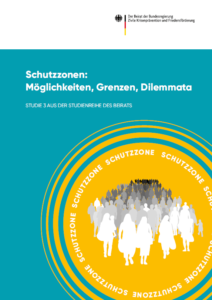Project
Protection Zones

25 years ago, in July 1995, Serbian militias murdered over 8,000 people in Srebrenica in Bosnia-Herzegovina while Europe and the rest of the world looked on. Since Srebrenica, protection zones have been discredited, but the idea of the protection zone seems to be making a comeback. When Turkey marched into Kurdish territory in northern Syria in 2019, the defence minister Annegret Kramp-Karrenbauer proposed an internationally controlled security zone. The German chancellor thought the idea was well worth trying to implement.
What can protection zones achieve? International humanitarian law obliges conflicting parties to protect civilians, the wounded and the sick in any circumstances. Protection zones provide the opportunity to save lives if – as in Srebrenica, in Syria or in South Sudan – one or several conflicting parties systematically violate their obligations with respect to international law and human rights. Under what circumstances international law permits robust protection and which courses of action are viable, however, is highly contentious. Establishing clarity is the basic prerequisite for a weighing up of the political implications next time the idea is on the table.
Protection or security zones, no-fly zones or buffer zones can, at least to a certain extent, relieve extreme suffering and curtail mass displacement. If the necessary prerequisites are in place, such zones can provide partial protection in limited areas against certain weapons or for particularly endangered groups. A success in northern Iraq in 1991, a failure in Bosnia in 1995, a success in South Sudan since 2014 and in the Ukraine since 2015, but thus far a failure in Syria: in contrast to what the memory of Srebrenica in 1995 suggests, protection zones can save lives – but only if the resources and the political will of the guarantor powers are up to the challenge.
